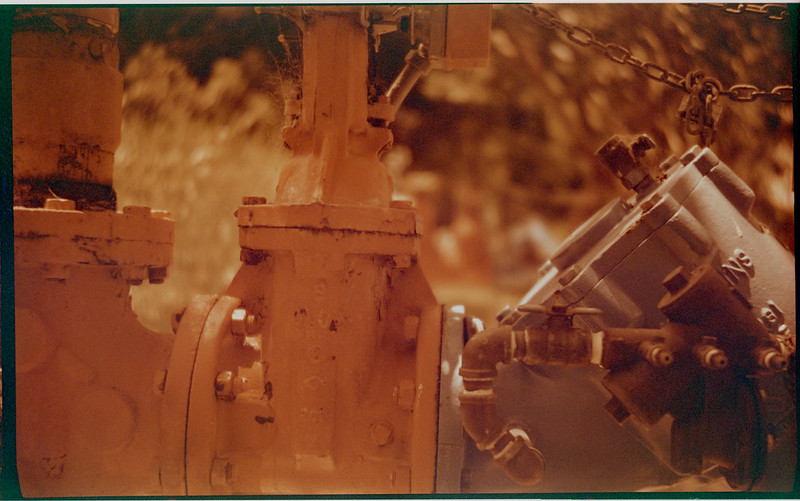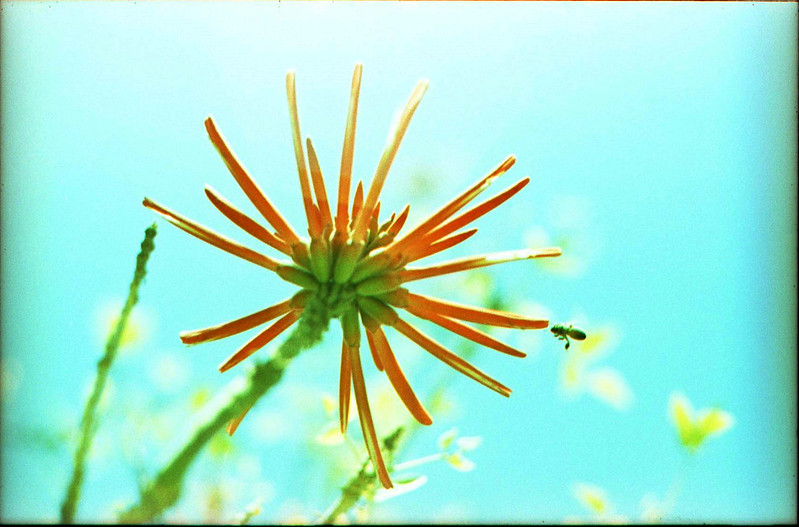
At first glance, you are thinking "James! Holy cow, take care of your freakin' white balance, will ya?" I thought that too, and I still do sometimes when I see a photo like this. But once you know what this is, you might gain an appreciation for it. This is "red scale" film and it is called that for obvious reasons. The colors are all 'shifted' toward the red end of the spectrum. So what is it and why use it?
Red scale film is simply regular color negative film that has been put on the spool with the emulsion side facing away from the lens. Ok, maybe I should back up a bit. Here is a diagram showing how modern color film is produced.
Normally, layer 'a' would be facing the lens and light would pass through the layers in a-i order. The layers are made and balanced so that this produces an accurate rendition of the actual image in terms of human vision. However, if you put the film on the spool backward, the light passes through in i-a order. That means that it first passes through the antihalation layer, followed by the base, then the red layer. This completely turns the balance on end and strange things begin to happen. It isn't just taking a photo through a red filter. That would cause blues and greens to look very dark, but that isn't the look you get with red scale film. It is shifted in a strange sort of surreal way. It isn't just white balance either. Take a look at this image that was 'corrected' in PhotoShop for white balance.

Now it is almost a sepia tone with the blue sky going grey and the whole thing giving a kind of monochrome (but not really) feel.
Next up is not really an exotic film as much as a misplaced one. What would happen if you took color transparency (slide) film and developed it in negative film chemistry? You would get what is called "cross-processed" images. The result depends on the film you start with and how you expose it, but in general, you are going to get increased contrast and potentially some color shifts. Some colors may saturate and others may wash out. You just have to experiment and see what happens.
Here is an image that I cross processed.

You can see that the sky has taken a very cyan color .The greens have saturated and the red of the coral tree flower has washed out to orange. To me it makes a kind of retro look as if the film or print has been left out in the sun. You can use regular Fuji Velvia (100 or 50) and either process it yourself or send it to a lab that offers cross processing (usually for a couple bucks more than regular E-6 slide processing). It is a lot of fun seeing what kind of results you get using unusual films or processes. Give it a try. Create something unique!!

No comments:
Post a Comment